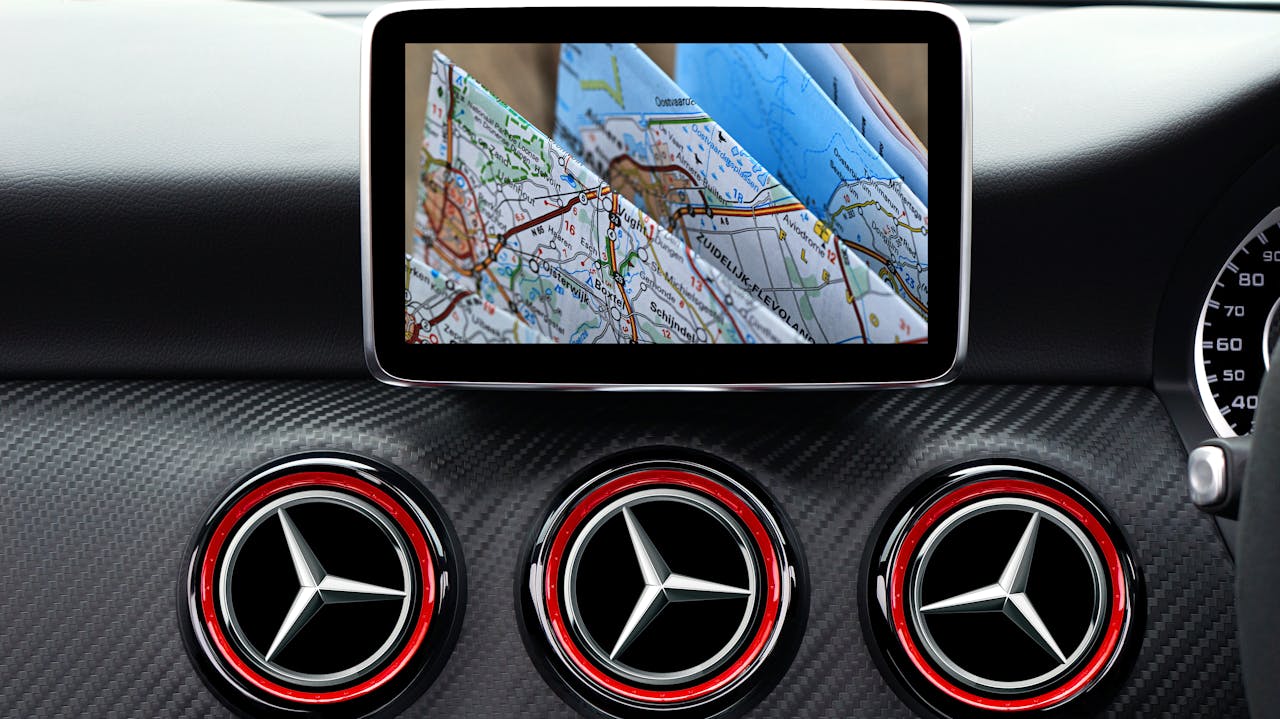Modern fleet operations rely on real-time visibility and precise, data-driven decisions to stay competitive. Outdated monitoring methods fail to meet the speed and accuracy of today’s logistics demand.
AI dash cams combine intelligent video analysis with instant feedback to improve safety and streamline daily operations. Their adoption increases accountability, reduces incident costs, and supports efficient fleet performance.

What Is An AI Fleet Dash Cam?
An AI fleet dash cam is a smart video system that uses artificial intelligence to analyze driving behavior and road conditions in real time. It does more than just record; it detects unsafe actions like phone use, speeding, lane drifting, and harsh braking as they happen.
These cameras include both road-facing and driver-facing lenses to capture a complete view of the journey. With built-in GPS, real-time alerts and cloud storage, they convert raw video into actionable insights that improve safety and efficiency.
Key Features of AI Dash Cams
Real-Time Event Detection
AI dash cams spot risky driving as it happens and send instant alerts to fleet managers. This includes things like using a phone while driving, not wearing a seatbelt, or looking drowsy.
Driver Scorecards
They track how each driver performs on the road. Things like harsh braking, speeding, or running signals are measured and turned into easy-to-read scorecards.
GPS and Telematics
Telematics systems track vehicle location, speed, and routes throughout each trip. AI dash cams pair this data with video footage to give a clear picture of what happened on the road.
Instant Video Uploads
If there’s a crash or any serious event, the camera uploads the video to the cloud right away. That way, nothing gets lost and managers can check the footage fast.
Cloud Access
All the video and data are stored online so managers can watch clips and check reports from anywhere. It makes reviewing and managing incidents much easier.
Operational Benefits of AI Dash Cams
Improved Driver Behavior
AI dash cams encourage safer driving by holding drivers accountable. When drivers know they’re being monitored, they’re less likely to text, speed, or ignore signs.
Fleet managers use driver scorecards to spot risky patterns and offer targeted coaching. This helps correct behavior without needing constant supervision.
Accident Reduction and Prevention
AI dash cams help fleets reduce accidents by warning drivers about dangers in real time. Alerts for things like lane drifting or driver fatigue give drivers a chance to react before a crash.
If an accident does happen, the recorded footage gives clear evidence to explain what went wrong and who was at fault.
Lower Insurance Costs
Using AI dash cams can cut insurance costs. Fewer accidents and clearer evidence mean insurers face less risk and often offer discounts.
When claims are made, dash cam footage helps prove what happened. It speeds up the process and reduces the chances of paying out on false claims.
Faster Incident Resolution
AI dash cams make handling incidents faster and easier. Instead of relying on reports or witness accounts, managers can check the video right away.
This saves time, gets vehicles back on the road sooner, and helps with internal reviews and decisions.
Better Operational Visibility
With cloud-connected dash cams, managers get a live view of what’s happening on the road. They can check speed, routes, and signs of driver fatigue from one dashboard.
This makes it easier to spot problems, adjust plans, and keep everything running smoothly.
Use Cases Across Fleet Types
Logistics and Delivery Fleets
For courier companies, time-sensitive deliveries require strict route and behavior monitoring. AI dash cams help ensure compliance, track delays, and improve customer satisfaction.
Public Transportation
Passenger transport demands heightened safety. Dash cams in buses and shuttles monitor driver attentiveness and assist in incident investigations, protecting both drivers and passengers.
Construction and Utility Fleets
AI dash cams ensure compliance with safety regulations on-site and during transit. Managers can review off-road usage, monitor vehicle idling, and validate compliance with safety training.
Integration With Fleet Management Systems
Modern fleets run more efficiently when their systems work together. AI dash cams connect directly with fleet management software to give managers one place to monitor everything.
Combined Data Streams
Dash cam footage combines with data from telematics, fuel tracking, maintenance records, and route schedules. This creates a full picture of each vehicle’s performance and status.
Centralized Dashboard
Managers can view video clips, driving stats, and alerts all on one dashboard. This makes it easier to make quick, smart decisions backed by real-time data.
Automated Workflows
The system can trigger automatic actions based on dash cam events. For example, if a driver brakes hard often, it might schedule a vehicle inspection or send a coaching alert.
Regulatory and Legal Compliance
Many regions require fleets to comply with driver hour limits, safety training, and vehicle maintenance protocols. AI dash cams support compliance by providing verifiable records.
- Hours of Service (HOS): Visual evidence verifies driver rest periods and driving durations, supplementing electronic logging devices (ELDs).
- Workplace Safety Regulations: AI cams document adherence to safety gear usage, especially in high-risk sectors like mining or chemical transport.
Data Privacy and Ethical Considerations
Using AI dash cams means companies need to be open and clear with drivers about how the system works. Trust starts with honest communication and well-defined policies.
Data Usage Policies
Fleets must clearly explain what data is recorded, why it’s collected, and who can view it. This builds transparency and keeps data use accountable.
Driver Consent
Drivers should be informed before cameras are installed. When they understand the safety benefits and how footage can protect them, they’re more likely to support the system.
Secure Data Storage
All video and data must be stored safely in the cloud. This includes using encryption, strict access controls, and following privacy laws like GDPR or CCPA.
Future Trends in AI Dash Cams
Predictive Analytics
AI dash cams will use data patterns to predict risks before they happen. This helps fleet managers prevent accidents and address issues early.
Emotion Recognition
Newer systems may detect signs of stress or emotional fatigue in drivers. This supports wellness efforts and adds another layer of safety monitoring.
5G Connectivity
Faster networks will allow dash cams to stream video and upload data in real time. As 5G becomes more common, this will become the new standard.
Conclusion
AI dash cams directly improve fleet operations by increasing driver safety, reducing accidents, and enhancing decision-making through real-time data. Their integration with telematics and cloud platforms ensures faster incident response and better visibility across all fleet activities.
With features like predictive analytics, emotion detection, and 5G connectivity, AI dash cams are evolving into essential tools for proactive fleet management. Adopting this technology supports compliance, lowers insurance costs, and strengthens operational control across logistics, transport, and utility sectors.

Founder Dinis Guarda
IntelligentHQ Your New Business Network.
IntelligentHQ is a Business network and an expert source for finance, capital markets and intelligence for thousands of global business professionals, startups, and companies.
We exist at the point of intersection between technology, social media, finance and innovation.
IntelligentHQ leverages innovation and scale of social digital technology, analytics, news, and distribution to create an unparalleled, full digital medium and social business networks spectrum.
IntelligentHQ is working hard, to become a trusted, and indispensable source of business news and analytics, within financial services and its associated supply chains and ecosystems










